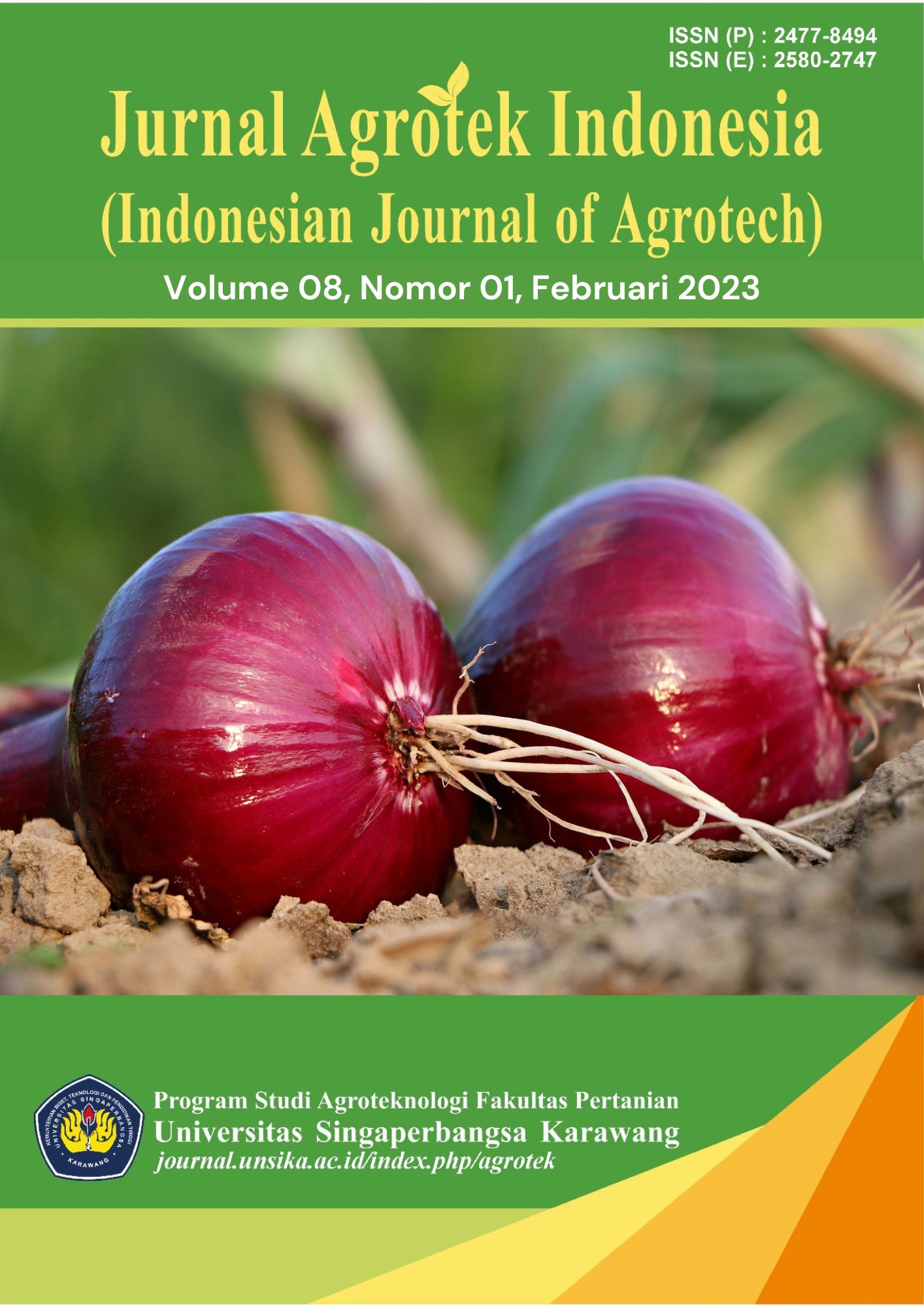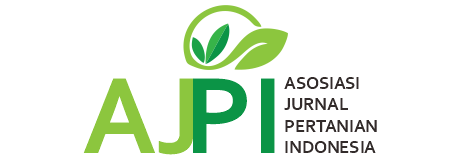RESPONSE OF SOYBEAN (Glycine max L. Merril) ANJASMORO VARIETIES DUE TO SOIL IMPROVEMENT AND NPK FERTILIZER IN DRY, ACID LAND
DOI:
https://doi.org/10.33661/jai.v8i1.9030Abstract
Acid dry land has the opportunity to be developed either through intensification or extensification programs. Opportunities for intensification are still open, because the average production level achieved has not been optimal. Soybean (Glycine max L) is one of the main legume commodities which is a national mainstay because it is the most popular source of vegetable protein for Indonesian people in general, for food diversification in supporting national food security. Practical steps to increase soybean productivity can also be through the efficient use of fertilizers, both organic and inorganic fertilizers. This experiment was carried out from July to October 2018 at the YAPETRI (Peruri Pension Foundation) Garden, which is located in Sapta Marga Hamlet RT.07 RW.03, Sinarbaya Village, Telukjambe Timur, Karawang. The research method used was an experiment with a factorial Randomized Block Design (RBD). The first factor is the type of soil enhancer which consists of 3 levels, namely straw organic fertilizer, organic waste fertilizer and bottom ash. The second factor was the dosage of Phonska fertilizer consisting of 4 levels (100% NPK, 75% NPK, 50% NPK and 25% NPK), resulting in 12 treatment combinations of experimental units which were repeated 3 times. Based on the results of the study, there was no interaction between the effect of soil amendment treatment and the effect of inorganic compound fertilizers on the growth and yield of soybeans of the Anjasmoro variety (Glycine max L. Merril) on dry land.
Downloads

Downloads
Published
How to Cite
Issue
Section
License
Copyright (c) 2023 Rika Yayu Agustini

This work is licensed under a Creative Commons Attribution-ShareAlike 4.0 International License.








